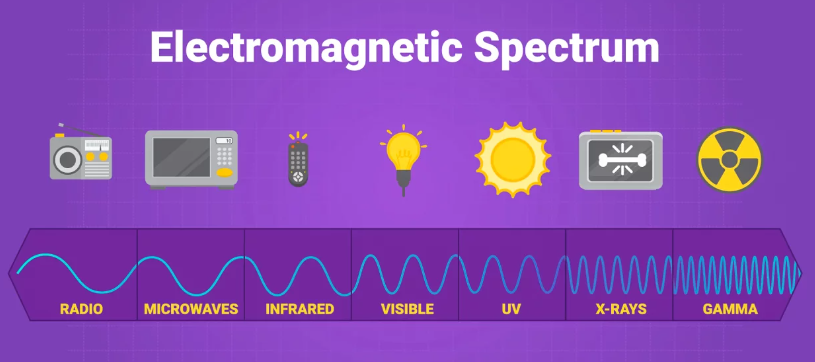Light and waves in general have many practical applications. They are used in solar panels to produce electricity, in solar furnaces to produce heat or in image amplifiers to make images more bright at night. Other types of radiation (infrared, UV, X, gamma) are used in astronomy to detect invisible objects or in medicine to “see” the inside of the human body.
The light may be hot or cold, pale or bright, depending on its energy and intensity. When physicists talk about light in general, they do not only consider visible light but also invisible rays such as ultraviolet or infrared light. Some even speak of “X-light” when they talk about x-rays like those used in hospitals to perform skeletal x-rays.
To avoid mixing real visible light with other types of radiation, it is better to talk about electromagnetic radiation. All of these waves form the electromagnetic spectrum. Starting from low to high energies, from small to high frequencies, the electromagnetic spectrum includes radio waves, infrared waves, light, ultraviolet, X and gamma rays.
What are the effects of other types of radiation? When you have sunburned, the surface of your skin has absorbed ultraviolet rays. You do not see them, but they burned your skin! This confirms once again that this radiation carried energy. They are very dangerous and in some cases, if your skin accumulates too much energy it can lead to serious diseases like cancer.
The ozone layer that surrounds the Earth protects us from UV rays and the harmful effects of the Sun, but in recent years, due to air pollution and the use of aerosol cans (sprays), this protective layer is thinner. and even disappears locally as we have observed over Antarctica. This situation is disturbing and may eventually blind animals or cause their death because they can not protect themselves with glasses and sunscreens!


Nice
Wow
ok
I dont give a damn i just want to download a movie
Hi
Ok
Cc
Koko